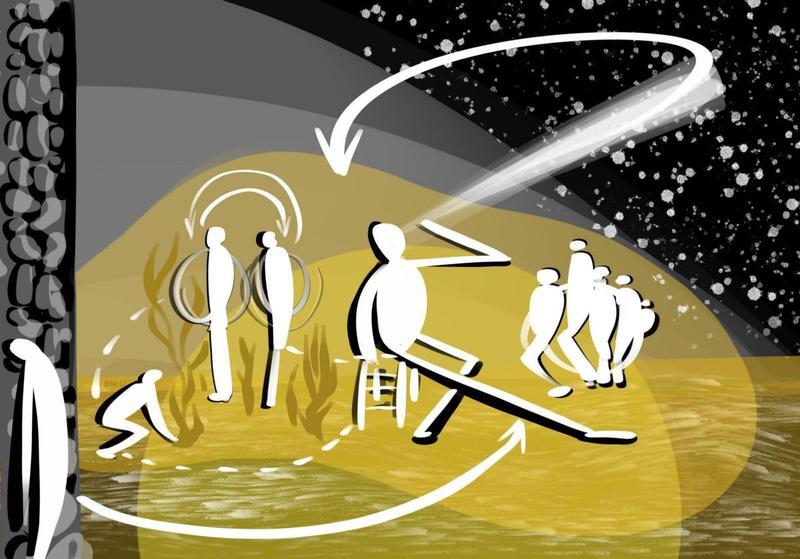Shira Gabriel's introduction about aggregate fizz at the Society for Personality and Social Psychology meeting
Shira Gabriel's introduction about aggregate fizz at the Society for Personality and Social Psychology meeting
Suppose you as of late walked with 3.2 million individuals, praised a 108-year sit tight for a World Series, or raved profoundly into the evening. The infectious elation you felt has a name: “ aggregate foam,” authored a century prior by the French humanist Émile Durkheim. It’s that glowy, overjoyed inclination where your ability to be self-aware loosens, respecting an association with your individual, synchronized people.
On an occasion of grand planning, I got SUNY Buffalo therapist Shira Gabriel’s introduction about aggregate fizz at the Society for Personality and Social Psychology meeting on Saturday. As indicated by her approaching examination, these bubbly encounters fill the human requirement for having a place such that most social brain science research — so since quite a while ago distracted with couples, families, and little gatherings — has in general ignored. It underscores how customs as old as journeys and gala days, and present-day as fights and professional athletics, assist individuals with driving more joyful, associated, and all the more actually significant lives.
Gabriel, who was started into fizz by following Phish during her graduate school years, said it’s such a thing the vast majority experience while never considering. Consider why individuals go to shows, for example, the sound is noisy, the beverages costly, individuals sweat-soaked, and you can hear similar melodies at home. “What is so certain about being in where the music is made?” she said in a meeting. While you don’t say to yourself that you’re going to the show to satisfy your requirement for aggregate bubbling, the need is being met.
“It’s an uncommon encounter, that sensation of association, of being in that goliath swarm,” she says, reviewing her Phishhead days. You and every other person in the arena know the melodies, and when you feel the notes meeting up, you experience them all things considered. In a less damp with sweat sense, geeks collect at Comic-Con and brain research gatherings to feel that equivalent association — regardless of whether they don’t know everyone (or anyone) there.
The information backs this up. In an in-press article for Psychological Assessment, Gabriel and her associates built up a scale called the Tendency for Effervescent Assembly Measure, or TEAM, which requests that individuals rate their concurrence with explanations like “When I go to a wedding, I feel an association with the others there” and “Having monster snowstorms or different occasions that nearby down a city or region is awful, yet the sensation of association with neighbors and many different outsiders experiencing something very similar nearly makes them justified, despite any trouble.”
At the point when the scientists directed TEAM to many college understudies and online volunteers, the connections were striking. True to form, individuals with high TEAM scores had more aggregate encounters in their lives, had a great time at them, needed a greater amount of them, and were bound to say they’d had such an encounter as of late. However, regardless of whether somebody with a high TEAM score hadn’t gotten their hit of mass happiness in the previous month, they actually had higher sensations of social connectedness and prosperity than those with a low TEAM. A high score was connected to less forlornness, in addition to more prominent importance and profound greatness — a wonder that gives off an impression of being a sound piece of an even mystic eating regimen.
With aggregate bubbling, Gabriel sees equals to another exploration premium of hers: the parasocial bonds that individuals structure with famous people and anecdotal characters from perusing rich accounts. For example, she’s discovered that with Harry Potter, the peruser is inundated into a local area of anecdotal wizards, giving a feeling of having a place. People, the hypersocial animals that we are, love to feel a piece of something — regardless of whether it’s the battle against Lord Voldemort or one against Donald Trump.
Scientists are as yet figuring out how to aggregate bubbling occurs at an actual level. As far as I might be concerned, it would appear that an instance of relational synchrony, where individuals sharing an encounter have their very physiology fall into an aggregate cadence, similar to the test human sciences discoveries where firewalking customs in real sense sync up the pulses of a town. Going ahead, Gabriel might want to investigate how aggregate foam deals with the strict and political developments it’s a piece of — for example, would a day of fights on every one of the seven mainlands really push political activity? With the record-breaking ladies’ walk, America seems to be amidst one more fantastic analysis.
Be the first to post a message!
